Renowned Scottish watercolour artist Claire Harkess RSW, RGI is best known for her work capturing the wildlife of far-flung places but her latest exhibition is a collection of painting inspired by subjects found much closer to home. The Courier found out how she has been captivated by Perthshire’s own rich flora and fauna.
It may not be the splendid isolation of Antarctica or the exotic Galapagos but Claire Harkess has found plenty to inspire in her local countryside for her new collection of watercolour paintings.
Claire grew up in Rabbie Burns country in south west Scotland, near the River Doon where she was surrounded by country parks, disused railways tracks and the Ayrshire coast. “Nature was our playground,” she says.
Living at home with mum, dad and sister, creativity was always encouraged. “My mum was a graduate of Glasgow School of Art and an art teacher for many years. My sister and I were always encouraged to be creative- arts, craft, music. Materials were always available,” and, perhaps most importantly for young artists, “making a mess was never an issue.”
Claire went on to attend Glasgow School of Art herself and her initial interest in painting birdlife won her the opportunity to become Artist in Residence at Edinburgh Zoo. “Here my interest in wildlife grew and set me on a path to explore the habitats in which these animals belong.”
Isolated places
“One of the most breath-taking was a trip to Antarctica and South Georgia,” she recalls. “Days at sea to get there, ever changing conditions, distant icebergs, a sudden flock of seabirds, being accompanied by a single albatross… all memories to store and return home to paint.
“Antarctica is a spectacular wilderness, reduced to elements – rock, ice, sea, sky. The wildlife is unafraid and intrigued by the presence of humans. Curious penguins come to peck your boots whilst fur and elephant seals line the shores and inhabit the crumbling whaling stations.”
The artist is keen to point out that Scotland has its own incredible locations too: “We have our own remote ‘exotic’ wild places, one of them St Kilda – home to nearly a million seabirds, it is a UNESCO world heritage site with the highest sea cliffs in the UK,” she points out.
Local focus
Her new body of work, Fine Feather, grew from a One Square Mile project where Claire began to explore her more close surroundings. “Living in a city centre, I wanted to document the surprising number of birds I saw in pockets of wasteland, forgotten corners, supermarket car parks,” she explains. “I began ‘One Square Mile’ to explore what was on my doorstep.
“The coincidence of lockdown intensified the search and opened opportunities to wander deserted golf courses and parklands.”
Claire says that once restrictions were lifted, she was keen to continue her local explorations but was able to impose a new limit, “Perthshire being the new imaginary border,” she explains. “One location on the edge of Perthshire was Argaty farm. Argaty is a working upland livestock farm by Doune. The family run the award-winning Argaty Red Kite project, established over 20 years ago in partnership with RSPB Scotland. Each afternoon they give the birds a small supplementary feed and hides are there for the public to visit and learn their history.
“The red kite was persecuted to extinction in the late 19th century. Thanks to projects like this the red kites have a place in our future.”
Skills learnt on her travels have helped her focus wherever she paints. “Travel has taught me that it’s not only where to look but how to look,” she points out. “To pay attention to and be present in the moment – take nothing for granted.
“Watching a sky full of red kites and hearing their cries is no less exotic than marvelling at something on a foreign shore. By definition it is only the location that defines it as ‘exotic’ but it doesn’t detract from appreciating what is all around us. Can we call it ‘locally exotic’?” she wonders.
For Claire the challenge in Fine Feather, “in producing a body of work that is familiar to all of us – blackbird, robin, sparrow – is to say something in a different way, a personal response that is hopefully uplifting, in celebration of what we can all see. Its familiarity is the challenge.”
She says that working close to home also had its advantages, including: “Being able to return to locations at different times of day & night and throughout the seasons makes for a deeper connection and understanding. Having time to study behaviour and habits is something that cannot easily be done on a time limited trip.
“The more time you spend on location the more there is to see. I have only scratched the surface.
“I’ve enjoyed the whole experience of finding subjects on my own doorstep. You can see wonderful things from just a wander round the park, or even something unexpected like going to a supermarket and you see a wren singing its heart out or 200 waxwings just arrived from Scandinavia. There are so many birds out there that are just so beautiful.”
Wonder of watercolour
Claire embraces the flow of watercolour when it comes to painting her subjects, “Watercolour is such an amazing medium with so many wonderful qualities that keep paintings alive,” she enthuses, “different effects that can be created – luminosity, transparency.
“When I’m painting a piece, it’s like having a conversation as I like to let the paint do as much of the talking as I do. I will start with an idea and try to coax the paint somewhere, the painting dries and moves and so does a little bit itself – it may try and pull me somewhere else.
“I like to get lost on purpose and diverge off my path, letting the paint flow and do its own thing. Sometimes it can feel a bit of a challenge but it’s ultimately a beautiful flowing, organic process which perfectly suits the way I work and my chosen subject of wildlife. I love to push the medium and experiment with different brushes and papers.”
For Claire, the opportunity to take the time to study and paint the Perthshire countryside and its inhabitants looks set to inspire more work in the future. “It has made me more appreciative of the wealth of species and environments we have here in Scotland,” she explains. “We may not have the large iconic predators of polar bears or Bengal tigers but to watch leaping red squirrels, circling kites, or listening to a squabbling tribe of sparrows can be equally captivating.”
Fine Feather by Claire Harkess RSW, RGI is on display at The Strathearn Gallery, Crieff, until May 21.
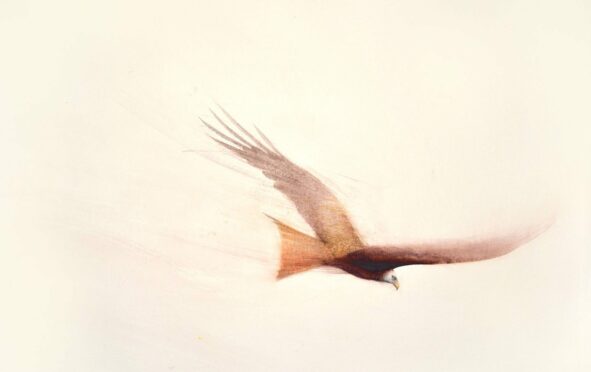
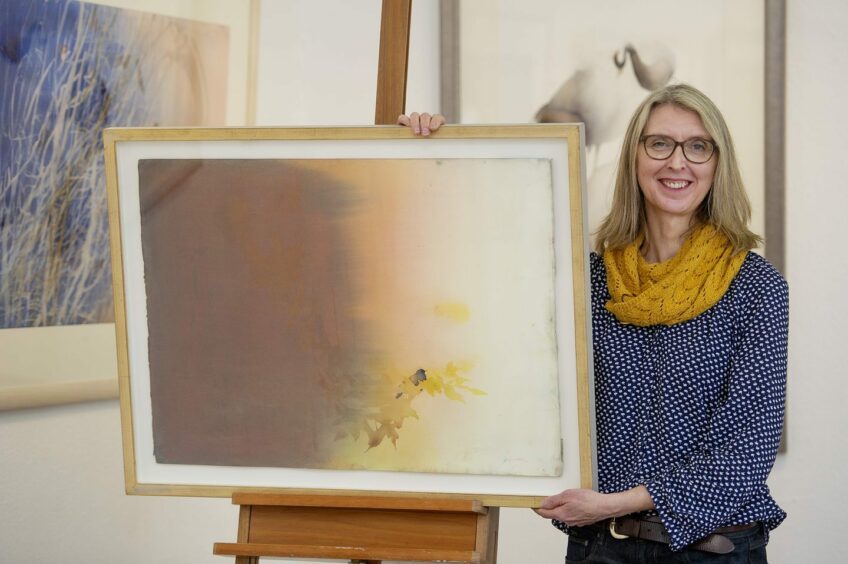
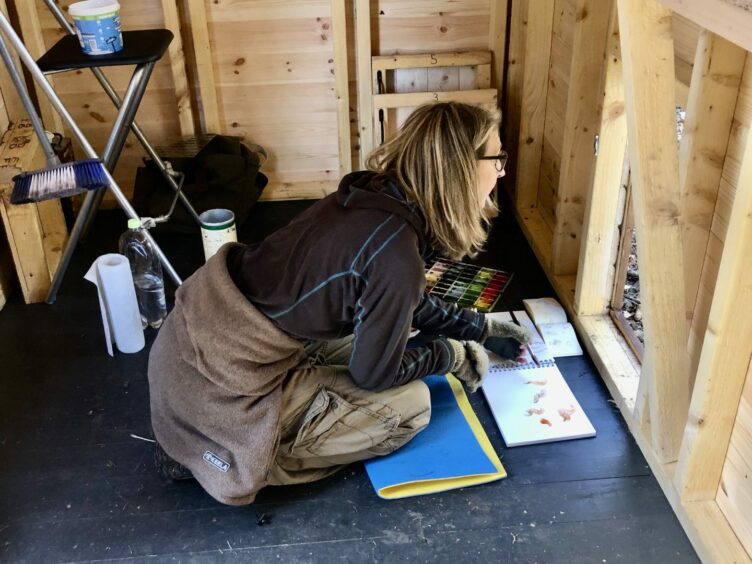
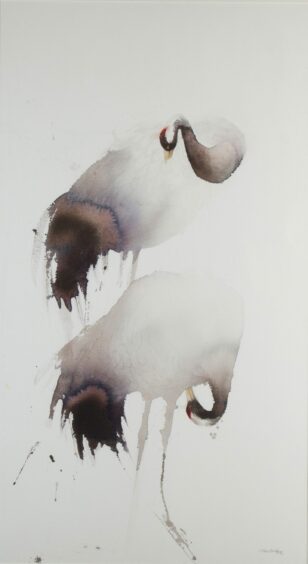
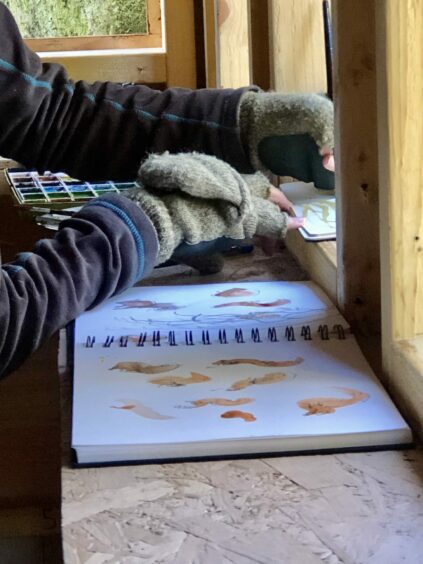
Conversation